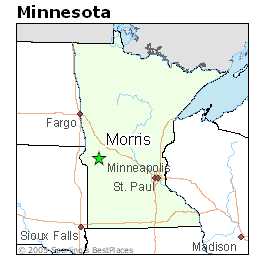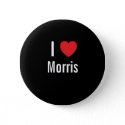 "There will never be anything more interesting than that American Civil War, never."
"There will never be anything more interesting than that American Civil War, never."-Gertrude Stein
It seems strange reflecting on a war fought on American soil. The American Civil War has been remote in time for a very long time now. It ended six years before Morris was even established. The Civil War veterans who are cited in Morris history tended to be up in years by the time they settled here. The one most easily remembered is Samuel Smith, whose memorial at Summit Cemetery (see photo) is easily the most striking one there.
It appears that a wee bit of mythology has crept into the story about how the monument came to be. Smith himself was not at fault for this, and the misunderstanding has nothing to do with his record of service, which was as laudable as that of any Union Civil War veteran.
I think we can chalk it up to the small town tendency of speculation morphing into fact. We can also chalk it up to the Civil War being so remote in time, the facts of the war and its aftermath can get obscured or even obliterated.
Before proceeding further on the subject of the statue, I want to show how easily these mistakes can happen. I'll do this using another Civil War episode.
A magazine like "America's Civil War" fights doggedly to clarify the war's facts through the mists of time. Civil War enthusiasts are in fact known for a near-obsession with having a firm understanding of the facts right down to the minute details. Don't even try to be a Civil War artist unless you can show the belt buckles exactly as they were.
So when historian James O. Hall clarified an important aspect of the Battle of Gettysburg in the 1980s, it was like a tremor among those enthusiasts. It was also heartbreaking because the original story was so appealing. So appealing in fact, that when the definitive movie "Gettysburg" was made in 1993, the clarification was ignored. Poetic license, or sentimentality, won out.
The very first character we see in that movie is a non-uniformed man on horseback. He has a telescope. He instantly exudes an air of adventure. He's a spy! Yes, he's the famous "Harrison the spy" who came to life on the pages of the Pulitzer Prize-winning historical novel by Michael Shaara, "The Killer Angels."
Ken Burns was inspired by this book to do his noted TV documentary on the war. Personally I'd have to cite it as the best book I've ever read.
Shaara did the best he could following the known facts of the time about the battle. "The Killer Angels" came out in 1974. A writer couldn't help but feel captivated by someone like Harrison, who was believed to have been a professional stage actor. A Shakespearean actor, no less.
In the movie he is played engagingly by Cooper Huckabee, a rustic character actor. His time onscreen is limited but he sticks with you.
Harrison the spy worked for General James Longstreet of the Confederate ("reb") cause. General Robert E. Lee seemed almost reluctant to accept the words of "an actor," but he did. He almost had to, because his chief cavalry scout Jeb Stuart was off on a goose chase.
Longstreet was played in the movie by Tom Berenger, and Lee by Martin Sheen. People with a southern slant on things have assailed Sheen's performance and gushed over Robert Duvall's portrayal in a later movie ("Gods and Generals"). How ridiculous! Sheen was brilliant, showing the conflicted nature of this general at this point in the war - brilliant but at the same time weary and almost defeatist.
Longstreet and Harrison had true rapport.
But Harrison was hardly a pro stage actor. It turns out that he was confused with James Harrison who was performing in Richmond, Virginia, at that time. James Harrison had a nightly gig at the New Richmond Theater while Harrison was out plying his cloak-and-dagger trade in the Suffolk, Virginia, and Goldsboro, North Carolina, areas.
Lest there be any doubt, commuting was no-go.
The name coincidence isn't enough to explain how the two individuals would be confused. Here the story takes an interesting twist. Harrison the spy, whose full name was Henry T. Harrison, went onstage as a one-time proposition, prodded by a $50 bet! He played Lago the Villain in Shakespeare's Othello. The date was Sept. 10, 1863, which would have been two months after the Gettysburg battle.
An account at the time suggested that Harrison the spy was "fortified by drink" onstage. But he must have won the bet.
In the theater of war he had true impact. He arrived in Chambersburg, Pennsylvania, with news that the Union army had crossed the Potomac and was in Frederick, Maryland. The Confederate Army was spread out and so it was vulnerable. Longstreet and Lee acted on Harrison's word which may have saved the Army of Northern Virgina from being destroyed piecemeal.
Ron Maxwell made the 1993 movie "Gettysburg" and appeared to be aware of the historical clarification that had been made about Harrison. Maxwell correctly identifies the spy as Henry T. Harrison and not James Harrison. But Maxwell couldn't bear making Harrison the movie character a more pedestrian sort than a professional actor. So he took the myth and ran with it!
At the end of the movie, where little thumbnails are presented of what the characters did in subsequent years, we learn that Harrison returned to the stage to play Shakespeare.
Hardly. The evidence shows that Henry T. Harrison "led a very private life and avoided notoriety," according to an historical account.
Maybe the original myth can be seen as a "white lie," because there is a tiny shred of truth about Harrison (the spy) acting.
Likewise, the misconception that many Morrissites have held about the Sam Smith statue is innocuous. The mythology here is that Smith, who was born with the last name Zimmerman but changed it due to war circumstances, "posed" for the sculpture of the First Minnesota Memorial statue in Gettysburg.
The Morris newspaper followed this storyline in a 1991 feature article. I didn't write it.
Thanks to some very exhaustive research by Thomas Rice, and made available to me by Melissa Yauk at the Morris Public Library, we learn that the Morris statue followed the Gettysburg statue in its basic design but it was sculpted as a separate venture. Sam wanted it on his gravesite as a tribute to his comrades and a reminder of the grand commitment and sacrifices they had all made.
A more striking memorial design could not possibly be conceived.
There is no documentation of any "posing" by Smith or anyone else. Rice's research is convincing. I have returned this material to Ms. Yauk at our library and I'm sure she could make it available to you.
The posing story seemed plausible at one time so it took on a life of its own, as small town stories tend to do. It's captivating but we ought to know that it isn't grounded in fact.
(I'm smiling here as I remember the scene in the movie "Airplane" where the Robert Hays character, lying on a military hospital bed, kills time by painting a picture with the help of a model who poses in a war combat scene. "Take five," the Hays character says. And the model, sounding irritated, says "thanks." In case you aren't aware, this was a comedy.)
The legend of Smith as artist's model is captivating like the "Shakespearean actor" who sneaked around in advance of the Union army. We can enjoy the myth-making and artistic license that weave a more compelling picture than what the sterile facts would tell us, unearthed through time.
Those facts are gospel to hardcore Civil War enthusiasts. The mythology helps spin epic movies and create small town legends.
Smith's story can stand on its own just with the sterile facts. Let's draw a line between that and the myth-making.
Here's a salute to you, Samuel Smith, devotee to the Union, RIP.
Click on the link below to read part 2 of my thoughts/reflections on the Sam Smith statue.
- Brian Williams - morris mn Minnesota - bwilly73@yahoo.com






















No comments:
Post a Comment